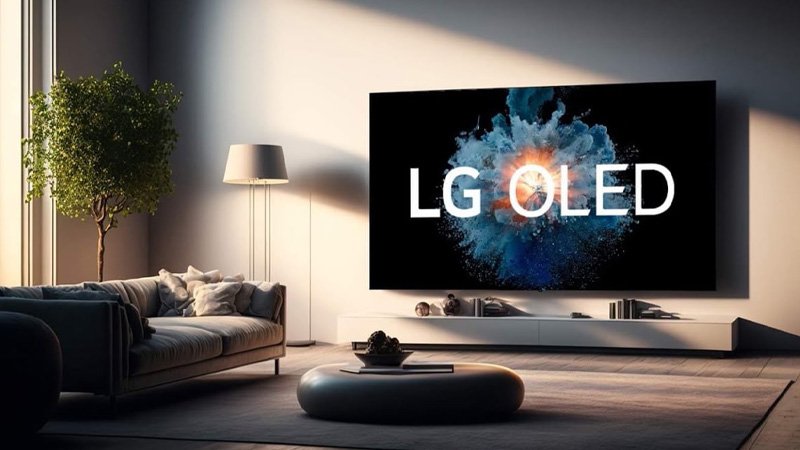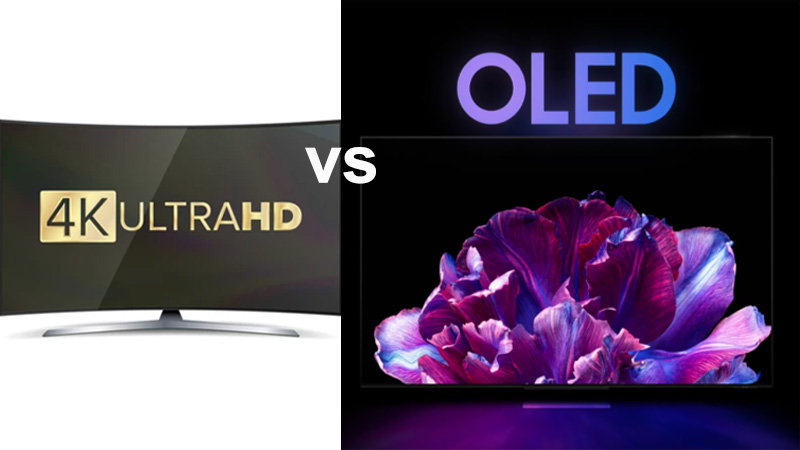Consumers today can choose from a wide variety of television sets that can give them the maximum viewing pleasure. Those television sets differ in size and resolution.
This article will discuss the differences between two types of television: 4K UHD and OLED. What do they offer, and which is the better option?
1. What is 4K UHD and OLED?
4K UHD pertains to televisions exhibiting a particular type of display resolution. The highest possible resolution is 3860×2160, but it can play lower resolutions, particularly the FHD or 1080P.
4K UHD is among the most sought-after televisions today for several reasons. First, it is mostly compatible with other media content, many of which are in HD resolutions of varying types.
Second, unlike earlier televisions sporting lower resolutions, those resolutions can give you an immersive experience. They are of greater precision, clarity, and better color quality. Those things optimize everything shown on TV, from finer details to great contrast, resulting in enhanced aesthetic pleasure.
Third, most 4K UHD Televisions offer good value for money. While 4K UHD is more expensive than FHD and others, it is still less expensive than 8K. And, considering what it gives you in terms of viewing experience and aesthetics, you get a lot for what you pay for.
However, remember that most 4K UHD TVs also employ OLED technology.
OLED is a specific technology for a specific type of television. It refers to the material and how a particular mechanism or technology in the TV works, not what is displayed.
OLED TVs belong to the LED TV, which sports a particular technology to optimize and enhance the viewing experience. OLED stands for Organic Light-Emitting Diodes, referring to its organic material. When an electric current passes through it, it creates light.
LED technology is more energy efficient, and using organic compounds to operate it makes it even more energy efficient. Television sets use OLED for greater energy efficiency while enhancing viewing pleasure.
What’s the basis for comparison, then? Both 4K UHD and OLED TVs have the exact resolution. It means you can get the same quality when talking about aesthetics. That is why most people compare the two even though they are not in the same category. Other differences might hold the key since they can provide the same resolution. It is important to note their different natures because this crucial aspect will determine all other differences between the two.

2. Comparing 4K UHD and OLED
They are of the same resolution, but they differ in almost anything. Those differences can ultimately impact your choice of choosing one over the other.
Price
4K UHD is available on most LED TVs, including OLED. OLED, however, uses a specific form of technology peculiar to the display. That specialized technology significantly impacts the price of the OLED TV.
However, most OLED TVs come larger than standard ones—48 – 90 inches. 4K UHD, meanwhile, is available on LED TVs smaller than those mentioned. The size of the OLED also contributes to its higher price.
Refresh Rate
Both TVs can run 120Hz, but if we talk about the median, most OLED TVs can run 120Hz, while the average for most 4K UHD LED TVs is 60Hz. You need a high-end LED TV to have one running 120Hz. A high-end LED TV can be as costly as OLED, or at least near its price compared to most average 4K UHD LED TVs.
Energy Efficiency
With its use of organic material and control of illumination, OLED is among the most energy-efficient TVs around—not only in comparison with other 4K UHD TVs but even with others touted to be of excellent efficiency.
Energy efficiency lies in controlling the pixels and consuming less energy in dark scenes. Overall, OLED does not need many backlights, so it does not consume much electricity.
The energy efficiency of 4 K UHD depends on the brand and the technology it employs. However, the average 4K UHD requires more backlighting to produce more vibrant colors and give the images and videos a richer texture. Because of this, it consumes more electricity and is thus less energy efficient.
Viewing Angle
OLED’s viewing angles are better than the standard 4K UHD. You will have the same view, even if you are more than ¾ of the angle away from the center. Thus, it is ideal for families or those with a larger audience than 4K UHD.

3. Which is Better (4K UHD and OLED)?
Efficiency-wise, OLED is way better than most 4K UHD TVs. The higher refresh rates mean you can watch in 4K without much lag or issues. The OLED utilizes energy efficiently and, with its energy-saving technology, can save you electricity costs.
Regarding color precision and brightness, 4K UHD has a slight edge, mainly due to the presence of more lights. However, the latest technology allows most manufacturers to close the gap, and OLED TVs can be at par with most 4K UHD TVs regarding this aspect in the foreseeable future.
Therefore, pound for pound, OLED is much better than most 4K UHDs. However, the difference may be insignificant, especially in aesthetic appeal and enhanced, immersive viewing experience.
Since the difference between an enjoyable viewing experience is not that significant, other factors might play into your choice of which of these two display technologies to buy.
4. Will You Buy 4K UHD or Go for OLED?
Regarding resolution, the 4K UHD and OLED TVs are the same. The difference lies elsewhere, and how essential they are to you will impact your decision about which to buy.
At first glance, OLED looks like a more high-end version of the 4K UHD, and in many ways, it is. OLED TVs are more expensive because of the materials and advanced technology they employ. They are usually larger, more energy efficient, and can save lots of electricity. They can also provide a better viewing angle than your usual 4K UHD.
Why then go for an average 4K UHD? There are some concerns regarding the longevity of OLED TVs and their efficiency in the long run. Studies show prolonged use of OLED TVs (more than five hours daily) can impact longevity. That is not the case with standard 4K UHD.
On average, even without those issues, 4K UHD TVs are longer-lasting than their OLED counterparts. Most 4K UHD TVs come with a lifetime guarantee, which attests to manufacturers’ utmost confidence in their products.
Of course, the price of those television sets, with lifetime guarantees, is significantly lower than that of OLED TVs. Those on a tight budget who need only a particular display technology to enjoy watching something may buy a standard 4K UHD instead of an OLED one.

Why Buy 4K UHD?
To summarize, you can go for 4K UHD if:
● You are on a tight budget and need affordable display technology.
● Your space is limited, and you do not need a giant TV.
● Viewing angle is not an issue because you can always watch it in an ideal position, or your TV need not cater to so many people, in which viewing angle may matter.
● Slight differences in color and brightness matter to you.
● You want a television that is durable and long-lasting.
Why Buy OLED TV?
You can go for OLED if:
● You need a large TV that has a 4K resolution.
● You want precise imaging and precision in detail, regardless of viewing angle.
● Slight differences in color and brightness do not matter.
● Energy efficiency and saved electricity costs matter to you.
● You have the money for it.
● You don’t need a lifetime warranty.
Balancing your needs and wants, aesthetics, efficiency, price, and everything in between can help you decide whether to buy a 4K UHD TV or an OLED one. Both have the same resolution, but slight differences can impact your choice.
5. Final Thoughts
It seems a category mistake to compare 4K UHD and OLED TVs. One is about display resolution, while the other is about employing materials to make an LED TV work.
However, on second thought, it makes sense. Both TVs have the same resolution and can offer some advantages. OLED TVs are more energy efficient, of more extensive sizes, and can provide a better viewing angle, which is best for watching with friends and family.
Standard 4K UHD, meanwhile, is relatively less expensive, can last a lifetime, provides better color and contrast, and is best for those with limited space and those who watch alone or with a select few. Balancing those pros and cons can help you decide which display technology with 4K is the best choice.



